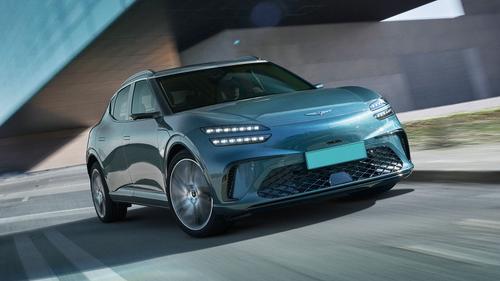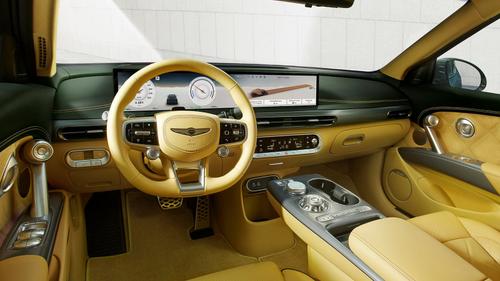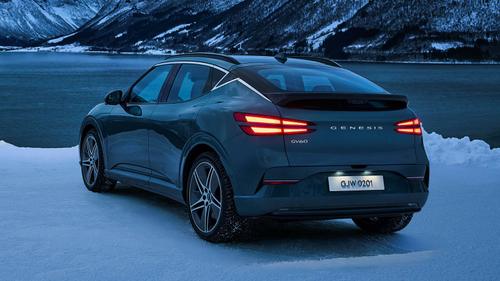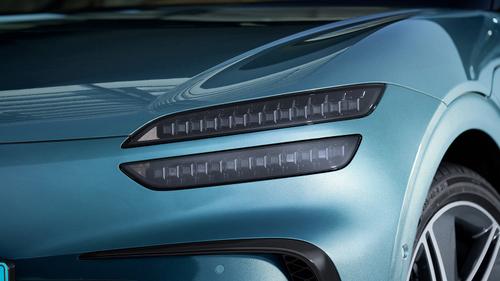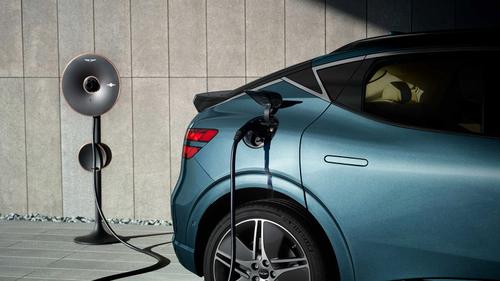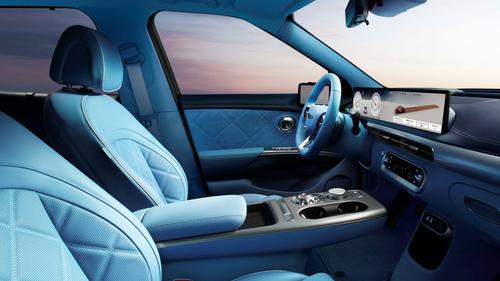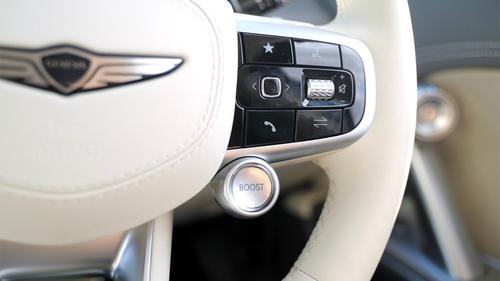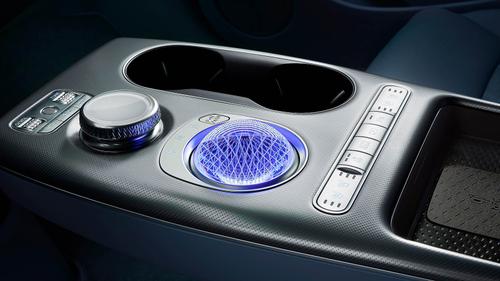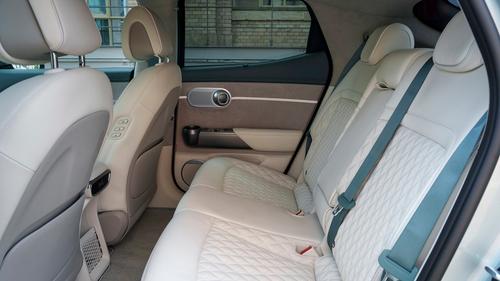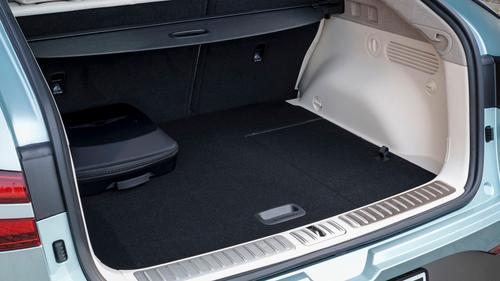












Genesis GV60 review
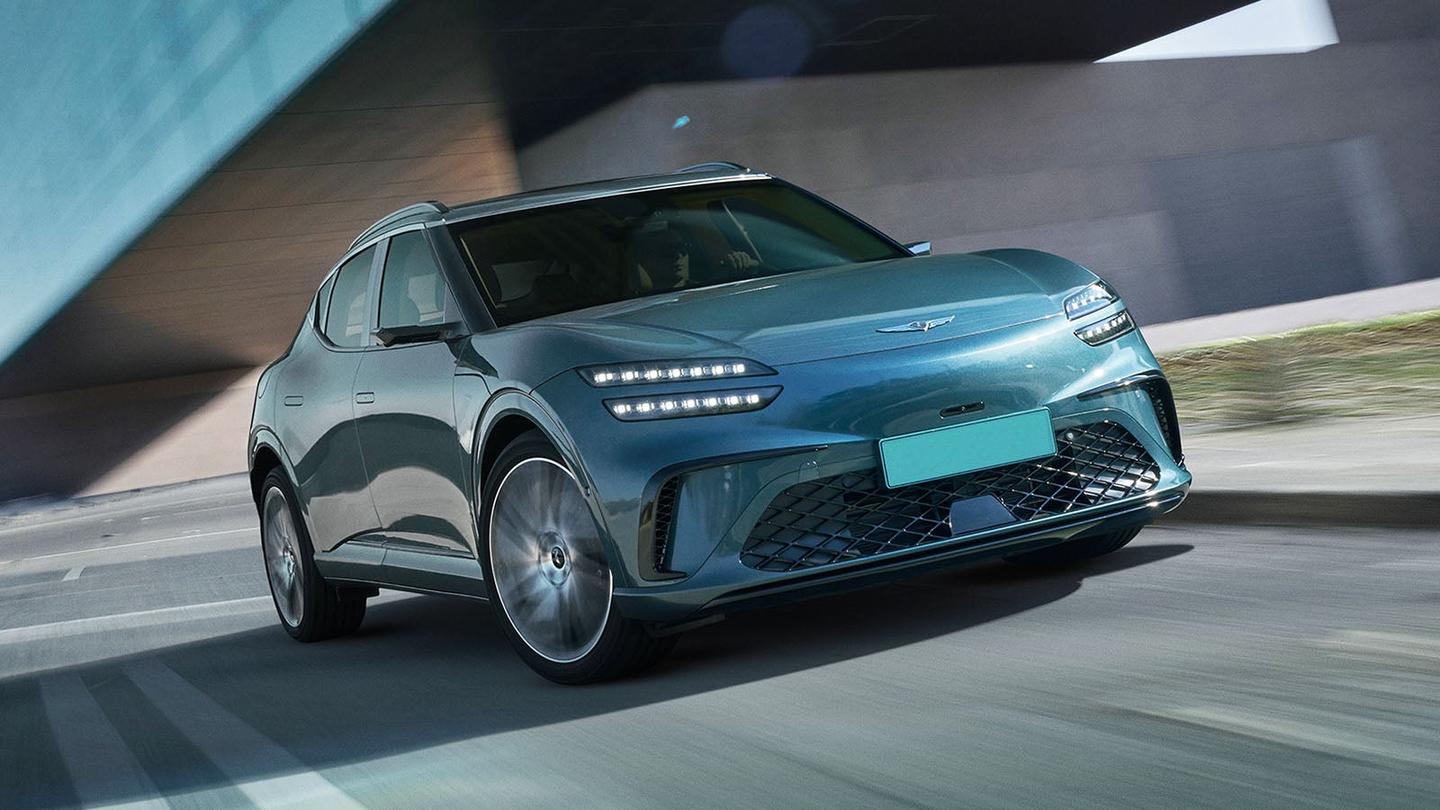
The Genesis GV60 has had a blink-and-you'll-miss-it facelift for 2025. Range and efficiency are both slightly improved, and it now sports an absurd 27-inch infotainment screen atop the dashboard.
We've tried out both the long-range Pure model and the rapid Performance version to see if the GV60 justifies its steep price tag. Does this Genesis have the Invisible Touch to earn your hard-earned cash? Or will its big screen leave you in a Land of Confusion?
- Luxurious, attractive interior
- Great blend of touchscreen and physical controls
- Swift, refined performance
- Expensive compared to some talented rivals
- Neither the sportiest nor the comfiest option
- Average practicality
Should I buy a Genesis GV60?
The GV60's segment is getting increasingly crowded. From Germany, there's the BMW iX1, Audi Q4 e-tron and Mercedes EQA, while the rest of the world fields rivals like the Tesla Model Y, Nissan Ariya and the Polestar 2. The Genesis is quite a bit pricier than most of these cars, however, costing from £54,000, while most alternatives start in the high £40,000s.
"Special mention needs to be given to the illuminated crystal ball in the centre console, which flips over theatrically when you start the car"
But stick all these cars in a lineup with the Genesis, and the Korean car holds up well in comparison. This is mostly thanks to the GV60's stunning interior, which makes a strong claim to being the most luxurious in the class. Where cars like the Model Y, iX1 and Polestar 2 have gone fashionably minimalist – and removed many interior features in the process – the Genesis is a symphony of tactile leather and metal surfaces. The design is attractive and cohesive too, with lots of circle and oval details in the switchgear.
In fact, the biggest threat comes from the GV60's own teammates, rather than its rivals. The E-GMP electric platform under the GV60 is shared with the Hyundai Ioniq 5 and Kia EV6. Both of these cars offer very similar driving and range performance as the Genesis, not to mention better practicality, for a lower asking price. So you really need to prefer the GV60's fancy interior appointments if it's to win your affection over its talented cousins.
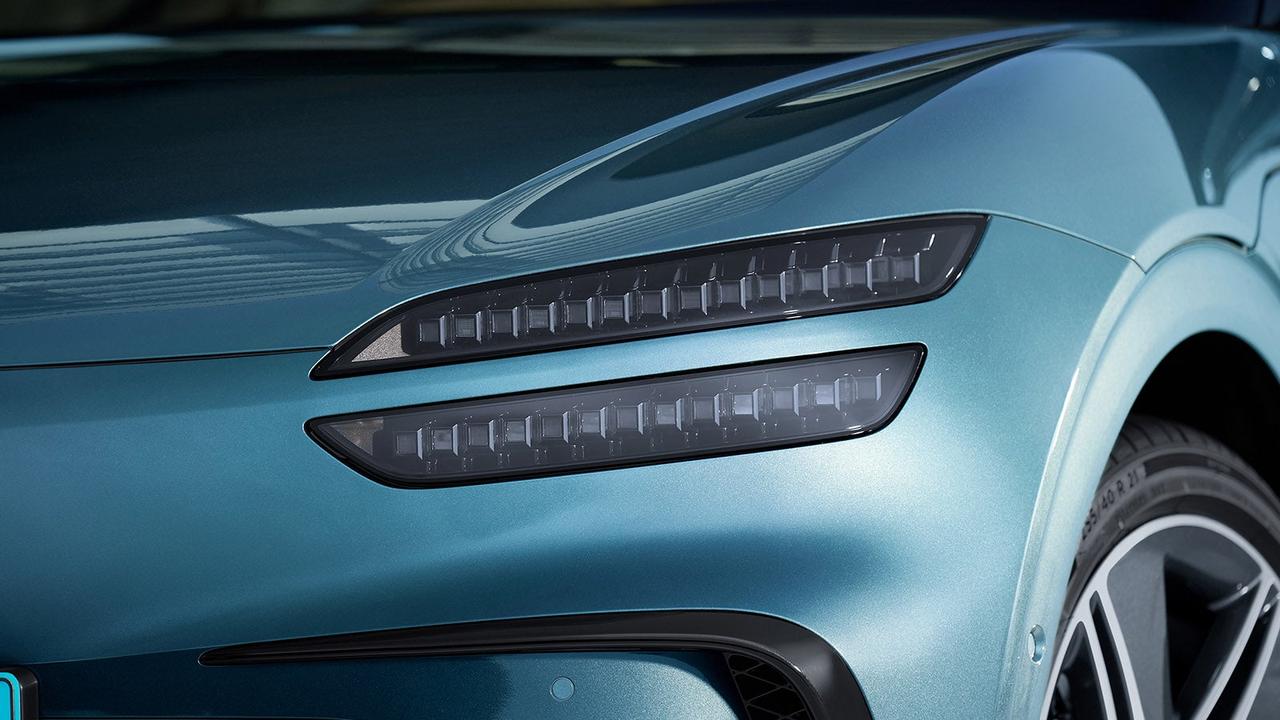
We'll cover the cabin accommodation in more detail below but the GV60 is shorter than its stablemates – it measures 4,545mm long versus 4,655mm for the Ioniq 5 and 4,680mm for the EV6. You'll feel that difference in the Genesis' rear seats, which aren't as palatial as the Hyundai or Kia's second row. There's still enough space for four adults to sit in comfort, however, and the smaller body makes the GV60 a fraction easier to park.
Considering how dramatic the car's exterior is, the driving experience is more docile. Performance is strong and swift as you'd hope from an electric car, even on entry-level Pure models. Refinement is great too, with barely any exterior noise imposed on the hushed cabin, even at fast motorway speeds. We even got the opportunity to try out the range-topping GV60 Performance on a race track to experience its full 490hp fury.
EV customers are known for shopping spec sheets, and the GV60 makes a decent on-paper showing. The entry-level £54,000 Pure is the longest-range version, turning out 348 claimed miles from its 84kWh battery pack. That's a respectable showing, but what's more impressive is the Genesis' 350kW max charge rate, enabling an 18-minute 10-80% charge time. Sport and Performance models have the same battery size and charge rate, with 318 and 311-mile ranges respectively.
Interior and technology
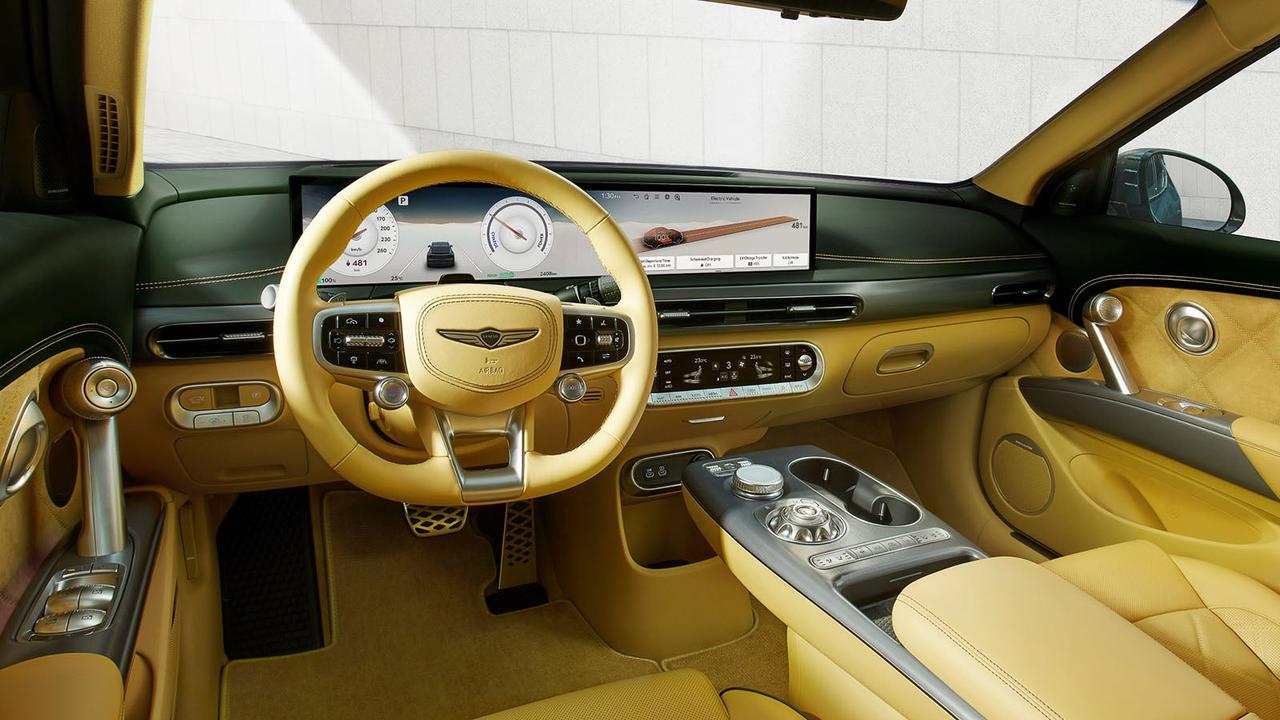
This is the GV60's party piece. Settle yourself in the driver's seat and you should see where the GV60's extra purchase price has gone. There are soft leather-like materials splashed across the dashboard and almost all the key cabin touchpoints, so anywhere you rest a hand or an elbow feels plush. Plus, most of the switchgear is either metal or metal-effect, further enhancing the cabin ambiance. Special mention needs to be given to the illuminated crystal ball in the centre console, which flips over theatrically when you start the car to reveal a dimpled rotary gear selector.
The climate controls are handled by an oval-shaped panel in the lower dashboard. This incorporates physical switches for key functions like temperature, screen defoggers and air recirculation – along with a pin-sharp screen nestled in the middle for air direction and fan speed. Handily, this also includes shortcut buttons for jumping between important infotainment functions. These are backed up by a rotary infotainment controller just ahead of the gear selector, plus knurled volume and track adjusters.
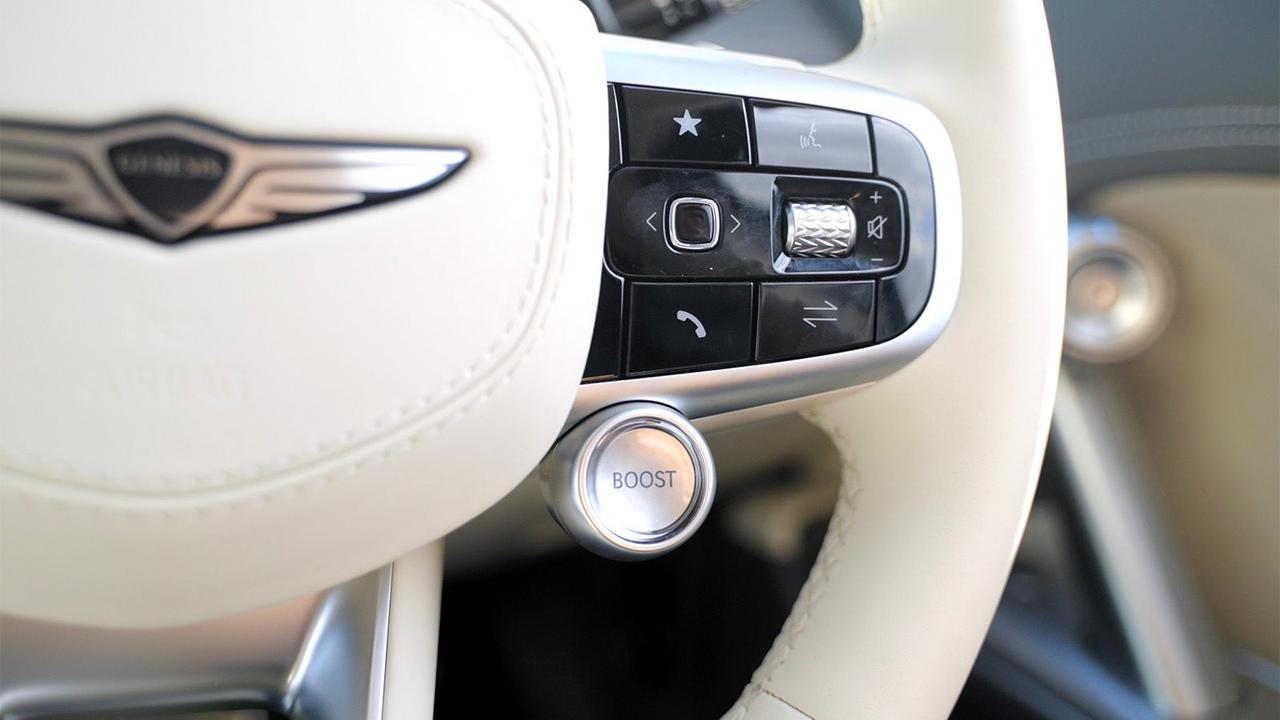
We're dancing around the biggest upgrade the GV60's received for 2025 – a vast 27-inch screen that stretches from behind the steering wheel to the centre of the dashboard. This kind of setup is commonplace in many of the GV60's rivals, but most simply fit two separate panels side-by-side into one unit. The Genesis, however, uses one single unbroken screen which, backed up by ultra-crisp graphics and rapid reactions, makes it feel very modern inside. And, unlike some screen-heavy rivals, the plentiful physical buttons and shortcut switches means it's easy to learn your way around the GV60's dashboard.
There are some shortcomings, however. The new screen might look great and feature 30% more 'tappable area' than the outgoing GV60, but there's still a noticeable chunk that's blocked by the steering wheel. As a result, there's a bit of unused space between the driver's screen section and the infotainment section. We also found the infotainment system became more dizzying the further we delved into it, with so many customisation options it was hard to find a setup that suited our tastes.
Practicality
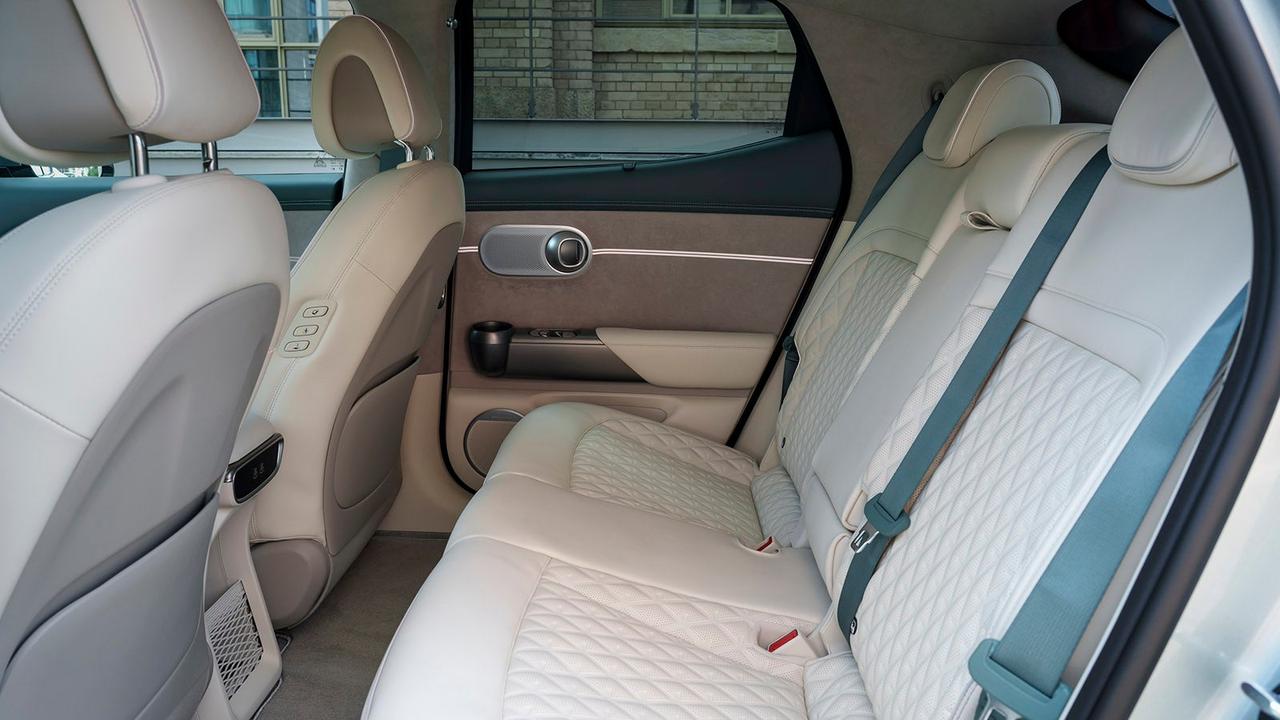
In isolation, the GV60's practicality is perfectly acceptable for a roughly 4.5-metre-long car. The EV platform means the wheels are pushed out to the car's extremities, leaving more space between them for passengers and cargo. Plus, the high roofline means lofty drivers don't have to hunch once seated on board. You also get a wide range of adjustment in the front seats, so finding a comfortable driving position is easy.
The rear seats are also fine in isolation. Even with a tall adult sat up front, another tall adult can sit behind them without their knees grazing the seat back. What that tall rear passenger won't have, however, is lots of space space to stretch out – something they'll miss if they've tried out the GV60's Kia or Hyundai stablemates. On the plus side, rear passengers get the same plush upholstery as front seat occupants, and the flat floor means any occasional middle-rear passengers won't have to battle their neighbours for foot space.
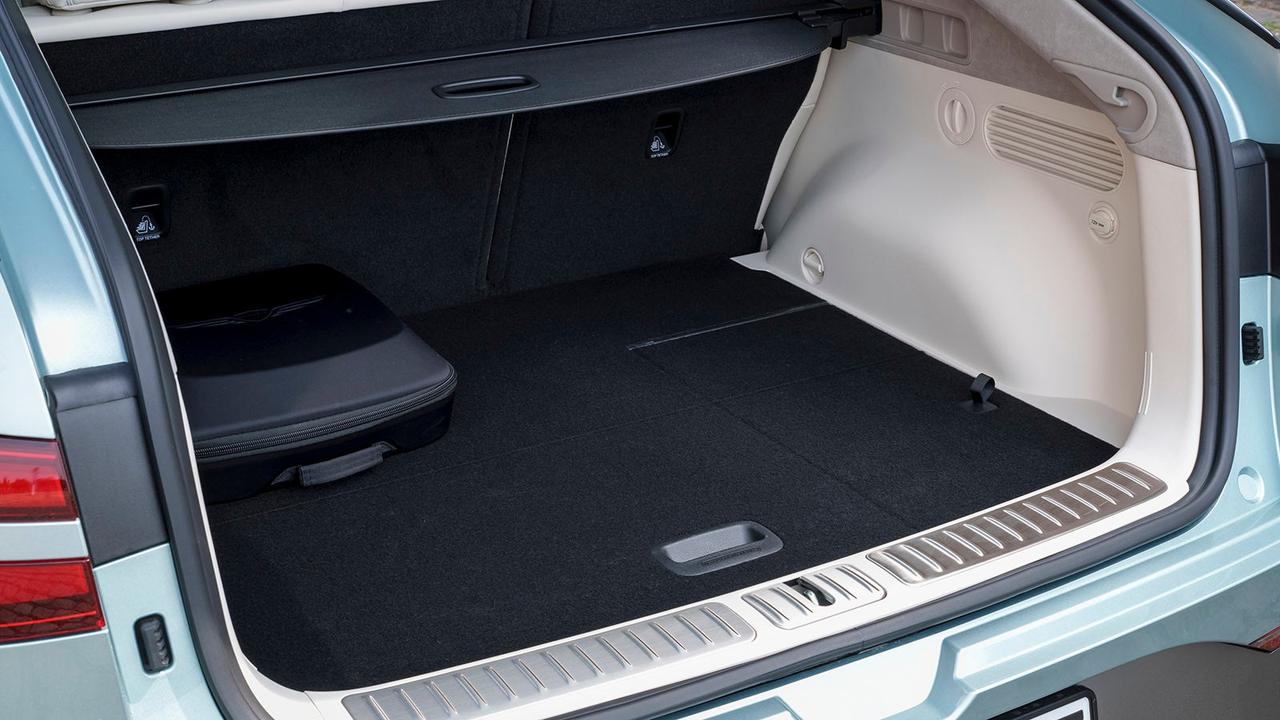
Like the seating area, the GV60's boot space is totally fine if you don't compare it to anything else in the class. The 432-litre cargo space is large enough for a bulky pushchair or a big weekly shop, and can probably handle a family's holiday luggage if you don't pack the kitchen sink. Both its Kia and Hyundai cousins beat it for carrying capacity, however, as do the Kia EV3 and Skoda Elroq, which are both physically smaller than the Genesis. Even worse are rivals like the Skoda Enyaq or Tesla Model Y, which comprehensively thrash the smaller GV60 for cargo space.
As for odds-and-ends storage, the GV60 makes a better showing here. There are large door bins and a decent-sized central cubby. You'll also find an open space beneath the jutting centre console that's just big enough for an average-sized handbag – a handy EV feature since they don't have a gearbox hiding under there. The glove box is big and slides outwards like a drawer so objects don't fall out. Finally, there's even some token storage under the bonnet – 53 litres in Pure models and 20 litres in dual-motor Sport and Performance versions – that's just large enough for a charging cable.
Engines and performance
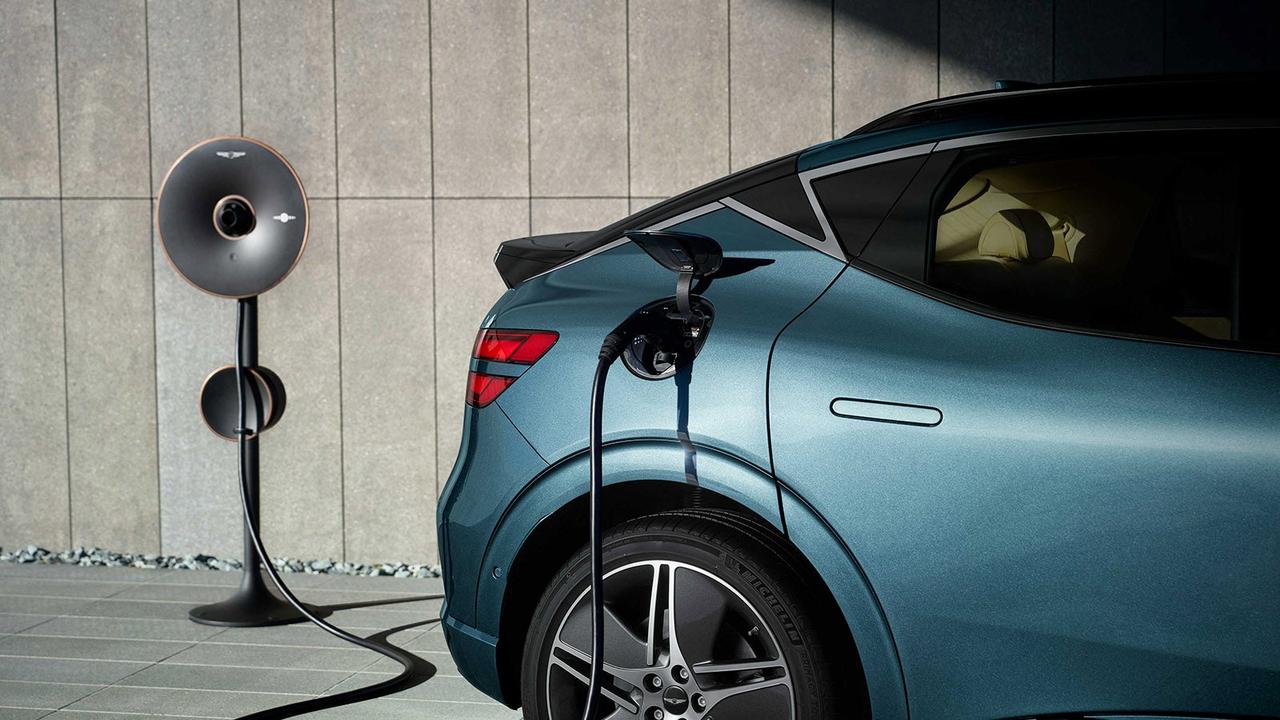
There are three powertrain setups available for the GV60, all using the same 84kWh battery pack. These are tied to the trim level you get, so entry-level Pure models come with a single 229hp rear motor. Sport models pair a 100hp front motor with a 218hp rear motor for 318hp in total and all-wheel drive. Finally, Performance versions feature a 245hp motor on both axles for 440hp in total, or 490hp if you're using Boost mode.
We were able to drive the GV60 Pure on a variety of British roads. Despite its entry-level billing, the single rear motor delivers more than enough performance for everyday driving. Accelerator tuning is fairly calm, so it won't smack your head against the headrest if you pin the pedal like dual-motor Tesla models. Instead, you get a swift but progressive amount of power metered out to the rear wheels, which makes the car feel responsive without giving your passengers travel sickness.
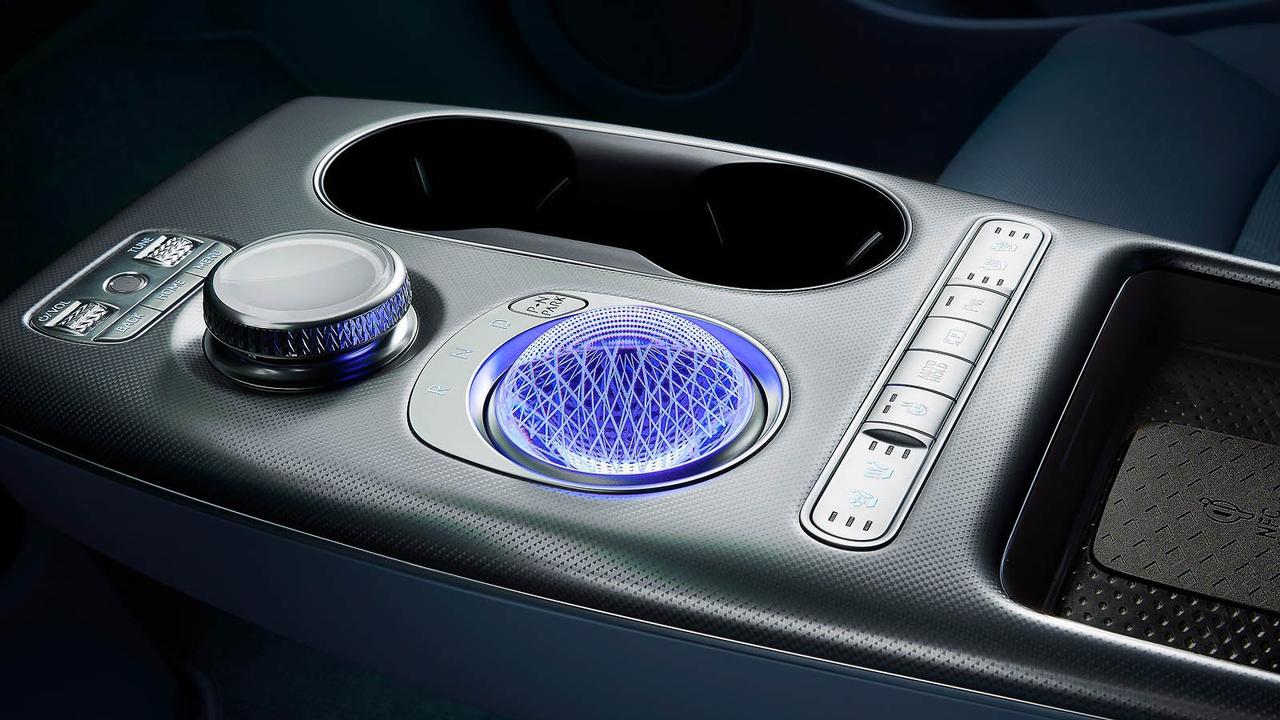
We're yet to try the mid-range Sport version, but Genesis did let us loose around Thruxton Circuit in the range-topping Performance version. As you'd hope from a car with twice the power and twice the number of motors, it's a lot faster than the Pure. Even without the Performance car's Boost mode, the car will happily hurl you far past 100mph without any sense of the acceleration letting up, and keep you pressed firmly into your seat as long as you can mash the pedal.
It's worth trying out Boost mode, however, as it's no gimmick. Press the steering-wheel-mounted button and you'll feel like you've dropped into The Fast and the Furious. The needle in the digital driver's dials buries itself deep into the red section, just as the car dumps another 50hp worth of power into the drivetrain for 10 seconds. This adds noticeable extra G-force when you accelerate – even at track speeds – and helps the car hit its claimed 0-62mph time of four seconds flat.
Another feature exclusive to the GV60's Performance trim is virtual gearshifts. This is borrowed from the Hyundai Ioniq 5 N and pipes fake engine noises through the car's speakers, and tunes the single-speed electric motor to mimic the sensation of snapping through gears in a fuel-powered car. You can 'shift gears' using the paddles on the back of the steering wheel that normally adjust the regenerative braking. Purists might scoff at this simulated experience but, in practice, it works seamlessly and really helps make the car more entertaining to drive.
Driving and comfort

Genesis is keen to lean into the GV60's supposed sportiness, as shown by the fact two of the three trims are called 'Sport' and 'Performance'. And, judged solely on straight-line speed, that's easy to believe – Sport models can outpace hot hatches, while Performance GV60s will out-drag most serious sports cars. Throw the GV60 into a corner, however, and the impression doesn't quite stick.
The steering is accurate and sensibly weighted, and pedal tuning is faultless. But any kind of vigorous cornering is rewarded first by a generous helping of body roll, which then washes into understeer if you provoke the car further. You're left feeling that the Genesis doesn't relish being pointed at an apex, with little sense that the car wants to tuck itself tighter onto its line with more steering or throttle input.

Pull off the race track and onto the regular roads and the GV60's setup makes much more sense. Here, you'll find the light, direct controls play nicely with the car's wall of electric torque, making it effortless to pilot through tight urban streets or glide down the motorway. This is backed up by the GV60's serene refinement, which blocks out so much wind and road noise that you can easily hit alarmingly fast speeds without noticing.
Ride quality is strong too, although perhaps not quite as soft as entry-level versions of the Kia EV6 we've tried. You'll still feel a small impact through the suspension when you hit a bump, but most of the harshness is shedded long before it makes it to the Genesis' cabin. As expected, the setup is at its most comfortable in Pure models with their 19-inch alloy wheels, while the meaty 21-inch 'rims' on Performance models send a little more jiggle through the base of your seat.












































